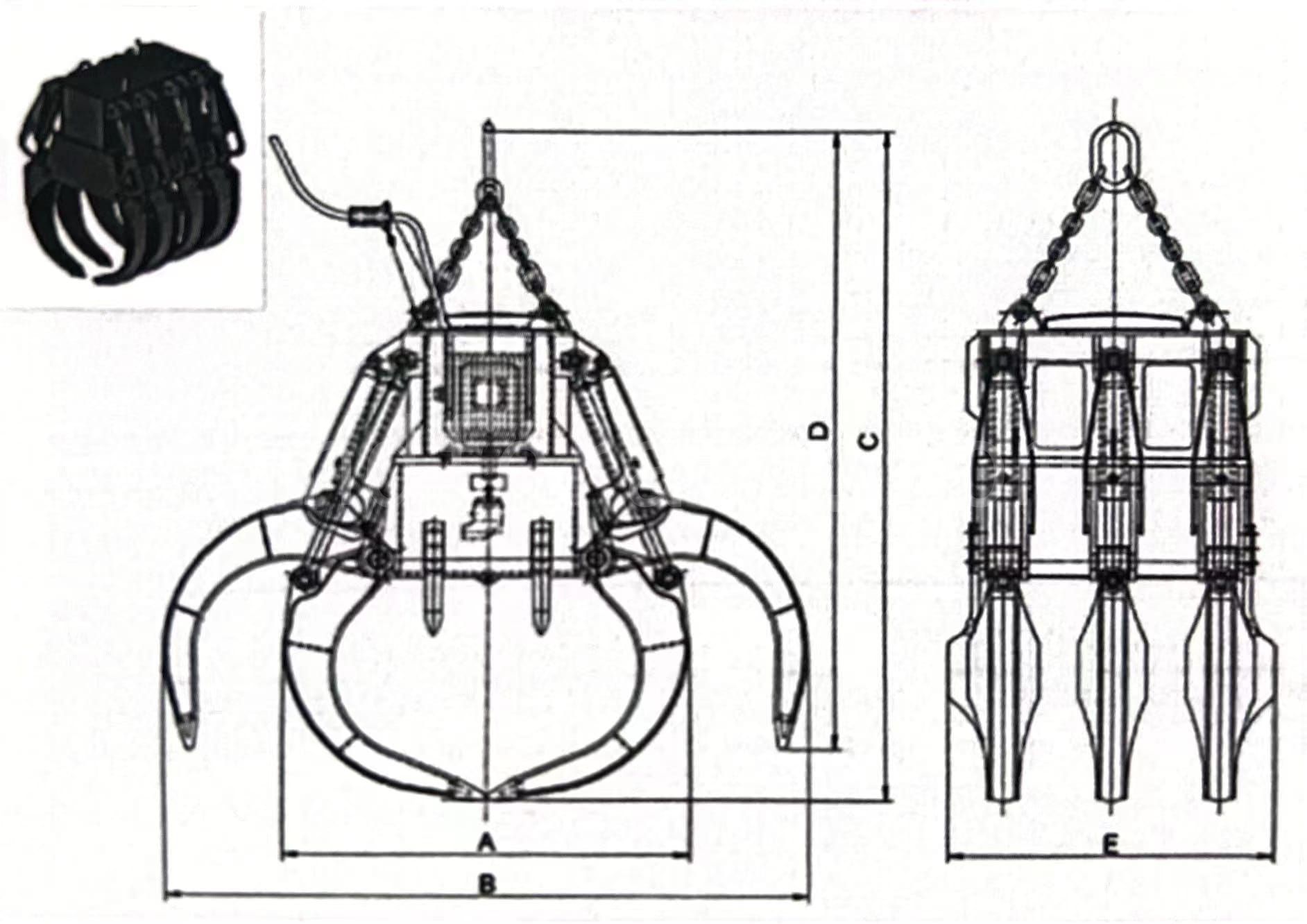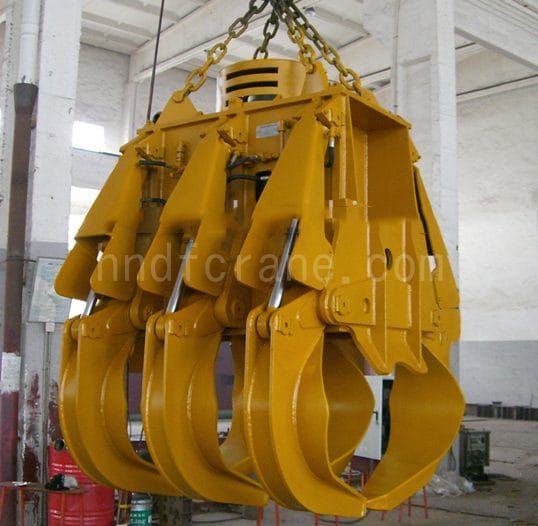Product Introduction
Electro hydraulic rectangular grabs are designed for handling scrap steel efficiently.
They feature a strong and reliable hydraulic system that ensures high grabbing efficiency and durability.
Mainly used in automotive environments for loading and unloading scrap, these grabs help streamline operations by quickly handling large amounts of material.
Electro hydraulic rectangular grabs sturdy construction and high grab rate make them ideal for heavy-duty tasks, offering both performance and longevity.
Electro hydraulic rectangular grabs are mostly used for overhead cranes and gantry cranes.
Electro hydraulic rectangular grabs are often used in waste incineration, power generation, scrap steel, and old battery treatment.
Generally grab irregular bulk materials, such as scrap steel, pig iron, and stone.
Advantage of Electro Hydraulic Rectangular Grabs
- Electro hydraulic rectangular grabs Ideal for wagons, trucks and containers ideal for wagons, trucks and containers.
- Electro hydraulic rectangular grabs high jaw force, high compaction factor.
- Jaw & Tip Material: Extremely Special wear-resistant steel (HARDOX 500)
- Robust structure in high elastic strength material.
- Oil tank, tightly enclosed & protected from environment impurities
- Optimized geometry, high filling factor.
- Fully protected hydraulic cylinders.
- Maintenance and lubrication free.
- Design according to the standard FEM1001/98,A8-M8-E-8.
- F.E.A. Calculation
- Variable flow piston pump (High Pressure)
- ISO 9001/2008 quality standard.
- CE confirmity.
Technical parameter

| Model | Volume (m³) | Image and size (mm) | Grab self weight (t) | Motor power (Kw) | Close time (s) | Operating Pressure (bar) | Rated lifting weight (t) | |||||
| A (mm) | B (mm) | C (mm) | D (mm) | E (mm) | 380V/50Hz (kW) | 440V/60Hz (kW) | ||||||
| DYJ12[2.0]6 | 2.0 | 2049 | 3242 | 3500 | 3278 | 1650 | 5000 | 37 | 43 | 15 | 200 | 12 |
| DYJ16[2.5]6 | 2.5 | 2060 | 3300 | 3500 | 3298 | 1850 | 6000 | 37 | 43 | 18 | 200 | 16 |
| DYJ20[3.2]6.5 | 3.2 | 2500 | 4280 | 3760 | 3200 | 1850 | 6500 | 37 | 43 | 18 | 200 | 20 |
| DYJ25[5]7.5 | 5.0 | 2840 | 4349 | 3850 | 3497 | 1950 | 7500 | 45 | 52 | 20 | 200 | 25 |
| DYJ32[5.5]8.5 | 5.5 | 3020 | 4807 | 4125 | 3597 | 1950 | 8500 | 45 | 52 | 20 | 200 | 32 |
| DYJ32[6]9.6 | 6.0 | 3150 | 5100 | 4200 | 3680 | 1950 | 9600 | 55 | 63 | 25 | 200 | 32 |
| DYJ40[7]10.5 | 7.0 | 3350 | 5320 | 4380 | 3760 | 1950 | 10500 | 55 | 63 | 25 | 200 | 40 |
How to choose the right grab
- Clarify your purpose:
Before delving into the options, please clarify your specific requirements.Ask yourself:
- What materials do you want to deal with?(Logs, scrap metal, stone, etc.)
- What tasks will the grab perform?(Loading, sorting, dismantling, etc.)
- What type of device will it be connected to?(Gantry crane, overhead crane)
- What is the specific gravity of the material you grab?The number of cubes of the grab?
What is the tonnage of your crane equipped with a grab?
According to the characteristics of the material being grabbed, the grab is usually divided into four basic types: light, medium, heavy and super heavy.
| The type of material to grab | Grab material | Capacity weight(t/m³) |
| Light | Coke, slag, grains, potatoes, medium-quality anthracite lime, cement, soil, gravel, clay, broken bricks, etc. | 0.5~1.2 |
| Medium | Peat, large pieces of anthracite coal, compacted coal, clay, limestone, gravel, salt, gravel, bricks, bauxite, flakes of iron oxide, cement, sand and bricks in water, etc. | 1.2~2.0 |
| Heavy | Limestone, heavy clay, small and medium-sized ores, hard rock, rod-shaped iron oxide, iron ore, lead concentrate powder, etc. | 2.0~2.6 |
| Overweight | Large ores, large manganese ore, sedimentary agglomerated lead ore powder, etc. | 2.6~3.3 |
- Accessory compatibility: Ensure that the grab is compatible with existing equipment.
- Budget considerations: The price range of the grab is different.Balance your budget based on the function and durability of the grab.
- Comments and suggestions: Research online, read user reviews, and seek suggestions from industry peers.
- Go to the crane manufacturer for on-site inspection and testing before purchasing: test the grab under real conditions as much as possible.Evaluate its performance, ease of use, and overall functionality.
Keep in mind that choosing the right grab requires a balance between functionality, safety, and cost.By considering these factors, you will find the perfect grab that can increase productivity and ensure smooth operation.





















































































